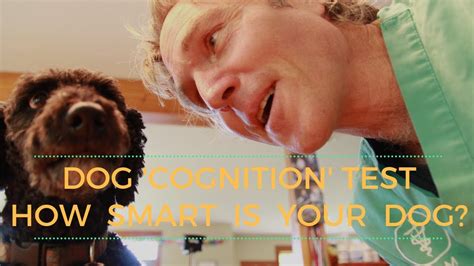As dog owners, we often marvel at the intelligence and abilities of our canine companions. But have you ever stopped to wonder how exactly dogs think and learn? In this blog post, we will delve into the fascinating world of canine cognition, exploring the various aspects of a dog’s mental processes and behavior. From their problem-solving abilities to emotional intelligence and social learning, we will unlock the secrets of how dogs interpret the world around them and retain information. By understanding these aspects of canine cognition, we can gain valuable insights into our furry friends’ behavior and enhance our interactions with them. So, let’s embark on a journey to unravel the mysteries of canine intelligence and learn how to better understand and communicate with our beloved pets.
Canine Intelligence: Unlocking the Canine Mind
Understanding canine intelligence is a fascinating area of study, as it allows us to delve into the inner workings of our beloved furry friends’ minds. Dogs are incredibly intelligent animals, capable of complex thought processes and problem-solving abilities.
When it comes to unlocking the canine mind, researchers have identified various factors that contribute to a dog’s intelligence. This includes their ability to interpret the world around them through sensory perception, their individual learning styles, and their impressive problem-solving abilities.
Furthermore, memory formation plays a crucial role in how dogs retain information and learn from past experiences. Their emotional intelligence also allows them to navigate the complex world of emotions, both their own and those of the humans around them.
Ultimately, delving into the topic of canine intelligence can provide valuable insights into the minds of our furry companions, allowing us to better understand and communicate with them in our everyday lives.
Sensory Perception: How Dogs Interpret the World
Studies show that dogs have an incredible ability to interpret the world through their sensory perceptions. Their keen sense of smell, sight, and hearing allows them to navigate their surroundings and understand the environment in ways that humans cannot even fathom.
When it comes to smell, dogs have been known to detect scents at concentrations as low as one part per trillion. This amazing sense of smell allows them to track down lost individuals, detect illegal substances, and even identify certain diseases. Their olfactory capabilities are truly mind-blowing.
In terms of sight, dogs have a different visual perception compared to humans. While their visual acuity and color perception may not be as advanced as ours, they excel in low-light vision and motion detection. This makes them excellent hunters and allows them to see in the dark, an ability that most humans can only dream of.
Lastly, their hearing is also top-notch. Dogs can hear high-pitched sounds at frequencies of up to 65,000 Hz, compared to the 20,000 Hz that humans can hear. This makes them adept at detecting distant noises and is why they are often used in search and rescue missions.
Learning Styles: Individuality in Canine Learning
Canine learning styles vary greatly from one dog to another, highlighting the individuality present in their approach to acquiring new information. Just like humans, dogs have different preferences and strengths when it comes to learning. Some canines may excel in visual learning, while others may thrive in hands-on training. Understanding and catering to these differences is crucial for effective training and skill development.
When it comes to visual learning, certain dogs may respond better to cues and commands that are backed by visual aids, such as hand signals and demonstrations. On the other hand, some canines may prefer a more tactile approach, where they learn best through physical interactions and experiences. It is important for trainers to identify these learning preferences in order to provide tailored training sessions that are most effective for each individual dog.
Furthermore, the environment in which dogs are trained can also impact their learning styles. Some canines may be more receptive to learning in a familiar and comfortable setting, while others may thrive in new and challenging environments. Recognizing and accommodating these differences can enhance the overall learning experience for dogs and promote better retention of skills and information.
In conclusion, acknowledging the individuality in canine learning styles is essential for successful training and skill development. By recognizing and catering to the unique preferences and strengths of each dog, trainers can create a more effective and personalized learning experience that ultimately leads to better skill acquisition and retention.
Problem-Solving Abilities: Analyzing Canine Logic
Canine logic and problem-solving abilities have long been a subject of fascination for pet owners and researchers alike. Understanding how dogs navigate complex situations and overcome obstacles provides valuable insight into their intelligence and cognitive capabilities. By analyzing canine logic, we can gain a deeper understanding of the thought processes that drive their problem-solving abilities.
One of the key components of canine logic is the ability to assess and evaluate a situation before taking action. Dogs rely on their sensory perception to gather information about their environment, using their keen sense of smell and hearing to interpret the world around them. This heightened sensory awareness allows them to make informed decisions when faced with challenges, demonstrating an impressive level of problem-solving acumen.
Additionally, dogs have been shown to possess remarkable memory formation abilities, allowing them to retain information about past experiences and apply it to present situations. This capacity for learning from past mistakes and successes plays a crucial role in their problem-solving skills, as they can draw on previous knowledge to navigate new challenges.
Emotional intelligence also factors into canine logic, as dogs are adept at interpreting human cues and responding to emotional signals. This ability to understand and respond to human emotions reflects a high level of cognitive flexibility and problem-solving prowess, as they can adapt their behavior to different social and emotional contexts.
Memory Formation: How Dogs Retain Information
Memory formation in dogs is a fascinating aspect of their cognitive abilities. Dogs have the ability to retain information through a process that involves the encoding, storage, and retrieval of memories. This process is essential for their learning and adaptation to their environment.
When a dog experiences something new, their brain goes through the process of encoding the information. This involves the conversion of sensory input into a form that can be stored. For example, when a dog learns a new command, their brain encodes the specific sounds and gestures associated with that command.
Once the information is encoded, it is stored in the dog’s memory. Dogs have both short-term and long-term memory capabilities. Short-term memory allows them to remember recent events, while long-term memory enables them to retain information for a longer period of time. For instance, a dog may remember a specific route to a favorite park even after not visiting it for several months.
Retrieving stored memories is the final step in the memory formation process. When a dog recalls information, such as the location of a hidden toy or a previously learned trick, they are accessing their memory. The ability to retrieve information from their memory is crucial for their problem-solving and learning abilities.
Emotional Intelligence: Unveiling Canine Emotions
Dogs possess emotional intelligence that is often underestimated by humans. Their ability to experience a wide range of emotions is a fascinating aspect of their behavior. From joy and excitement to fear and anxiety, canines demonstrate a complex emotional landscape that is worth exploring.
One of the key components of canine emotional intelligence is their ability to form strong bonds with their human and animal counterparts. These bonds are built on trust, loyalty, and affection, and have a significant impact on a dog’s overall emotional well-being.
Furthermore, canine emotions can also be influenced by their environment and past experiences. Dogs have the capacity to remember past events and react emotionally to similar situations in the future, showing a certain level of emotional intelligence in processing and responding to stimuli.
Understanding and acknowledging a dog’s emotional intelligence is essential in building a strong and trusting relationship with them. By recognizing and respecting their emotions, we can better meet their needs and ensure their overall emotional well-being.
Communication Skills: Decoding Canine Body Language
Understanding canine body language is crucial for building a strong bond with your furry friend. Dogs communicate primarily through their body movements and vocalizations, so being able to decode their signals is essential for effective interaction. By learning to interpret their body language, we can better understand our dogs’ emotions, needs, and intentions.
One of the most common ways dogs communicate is through their tail wagging. While many people assume that a wagging tail always means a happy dog, the reality is more complex. The speed, height, and direction of the wag can convey different messages. For example, a slow wagging tail held low could indicate fear or submission, while a fast wag with a high tail usually suggests excitement or happiness.
In addition to tail wagging, facial expressions also play a significant role in canine communication. Dogs use their eyes, ears, and mouth to convey their feelings and intentions. For example, a relaxed, open mouth and soft eyes typically signal a calm and friendly demeanor, while a tense mouth and narrowed eyes may indicate aggression or discomfort.
Furthermore, posture and body position are important aspects of canine body language. A dog’s stance, whether they are standing, sitting, or lying down, can communicate their confidence, submissiveness, or readiness to play. Understanding these subtle cues can help us respond appropriately to our dogs and create a harmonious interaction.
Social Learning: How Dogs Acquire Knowledge from Others
When it comes to social learning, dogs are incredibly adept at acquiring knowledge from others in their environment. Whether it’s learning from other dogs, animals, or humans, dogs have a remarkable ability to observe, imitate, and learn from their surroundings.
One of the primary ways that dogs acquire knowledge from others is through imitation. Dogs are natural imitators, and they often learn new behaviors by watching and mimicking the actions of other dogs or humans. This ability to imitate allows dogs to pick up on social cues, learn new tricks, and develop new skills by observing and copying the behaviors of others.
In addition to imitation, dogs also engage in social learning through interaction with other animals and humans. Dogs are highly social creatures, and they learn a great deal through their interactions with other dogs and humans. Whether it’s learning to play and socialize with other dogs at a dog park, or engaging in training sessions with their owners, dogs are constantly learning and acquiring new knowledge through their social interactions.
Overall, social learning plays a crucial role in how dogs acquire knowledge from others in their environment. By observing, imitating, and interacting with others, dogs are able to learn new behaviors, develop new skills, and navigate their social world with ease. Understanding the importance of social learning in dogs can help us better appreciate their remarkable ability to acquire knowledge from others.





